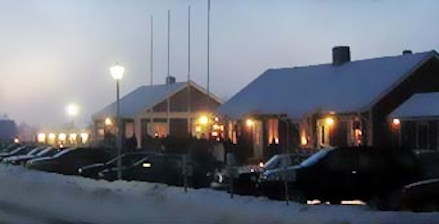We just returned from a hardship “no heat” service call. These folks are obviously up against it economically, as are many these days. However they recently substituted an electric water heater for their boiler immersion coil to generate domestic hot water and hopefully reduce their summer fuel bill. Now they are concerned about the increase in their electric bill as a consequence.
This brings up the timely subject of options available in DHW generation. Please refer to content in our other blogs, specifically related to energy source selection, tempering tanks and using a Heating Cost Calculator. For the latter we use the NH OEP Heating Cost Calculator at http://www.nhclimateaudit.org/calculators.php. There should be equivalent calculation tools available for your region.
Heating Cost Calculators don’t lie. They provide a unit energy cost per Million BTU’s for each fuel. You should apply an appropriate AFUE (Energy Efficiency Rating) for your or the best competing appliance by fuel type to get an accurate comparison.
By calculation DHW heating fuels from lowest to highest costs are: (NH Region)
- Natural Gas – Rate factored by 1.3 for actual billing.(Limited rural availability.)
- Fuel Oil
- Propane
- Electricity – Must be also factored for actual billing (Varies significantly by Provider)
Note: 1&4 are “distributed fuels”, necessarily incurring pipelining and distribution costs.
Natural Gas is by far the most efficient fuel for both heating and DHW generation. Propane, a manufactured fuel, is by comparison a significantly higher cost product. This is unfortunate in that they utilize the same appliances (with minor modification) with similar efficiencies. Propane fuel cost is a killer!
Fuel Oil and Gas Heating Appliances provide the same function, however differing significantly in configuration to accommodate their particular combustion characteristics.
Electricity despite its extremely high energy efficiency is offset dramatically by unit cost. Electric Water Heaters are enticingly priced, too. Too bad.
We are considering only the intermittent combustion fuels (oil and gases) in our analysis. The continuous combustion fuels such as wood, coal, etc. suffer by nature to being very inefficient DHW generators. This is not to allow that these fuels fired in boilers can provide seasonal DHW to Indirect Storage Heaters or coupled to a central boiler with an immersion coil. Although increasing in popularity rurally, they don’t represent a significant market segment to date.
Gas and Oil Combustion Appliances are limited to Boilers and Water Heaters. Their configuration options are similar with the exception of the Gas “Demand” Water Heater and are as follows:
- A “stand-alone” (dedicated) Oil or Gas Water Heater. These are a virtual necessity when the central heating appliance is Forced Hot Air (FHA).
- The Gas “Demand” Water Heater – A unique, hang-on-the-wall device, it stores no heated water but fires only when DHW flow demand is detected.
- A Central Heating Boiler with an Immersion Coil therein to create DHW. A common, but declining in popularity configuration in higher heating demand climates (as ours).
- A Central Heating-only Boiler coupled to an Indirect Water Heater (Super-insulated DHW Storage Tank). Provides higher efficiency in both heating and DHW generation. Significantly increasing in popularity.
The Gas-fired “Demand” Water Heater has a distinct DHW market application, subject to several limitations:
- They are “pricey” relative to other options.
- Initial DHW delivery is mildly delayed during warm up.
- Long cycle demand capacity reduces with supply water temperature decrease (colder water from source).
- Annual chemical treatment to control sedimentation is required to maintain performance.
Note: Both the Gas “Demand” Water Heater and Boiler Immersion Coil Systems mentioned can benefit from a “Tempering Tank” placed in line with their water supplies. (Reference our prior blog on these.) It’s a non-insulated accumulation tank that allows water to acclimate to ambient (room) temperature before entering the DHW heating device. Increases heater performance significantly by temperature and delivery maintenance over the total cycle demand.
Otherwise, Indirect Storage Heaters are the path to efficient DHW generation and storage – regardless! They compliment lifestyle variations and usage patterns when coupled to an efficient heating-water-only generating device, commonly referred to as a “Cold Start” Boiler. It fires ONLY when area heating or DHW recovery is demanded. Otherwise they revert toward ambient temperature, saving significant “standby losses” when not in use. There are several options to “getting there from here”, depending upon your situation.
- Purchase a High-efficiency “Heat-only” Boiler and Indirect Water Heater as a package and be done with it.
- You can convert your existing Immersion Coil System Boiler to a “Cold Start” Type by:
- Changing your Master Aquastat Control to a “Cold Start” Unit
- Adding an Indirect Water Heater with its own circulator or valved zone.
- Add an Insulated DHW Storage Tank coupled to your current Boiler Immersion Coil with a POTABLE WATER CIRCULATOR ONLY (Stainless or Bronze) and Temp Aquastat Zone in the loop. Substitute a “Cold Start” Master Aquastat to convert your boiler to a “Heat-only” as in Option 2.
- Do Item 3, but convert a good 80 Gal. Electric Hot Water Heater into a Storage Tank. Strip its wiring and utilize the upper, internal Thermostat Switch as a DHW temp control. Note: This last option is the “Cheap Trick”. It costs significantly less to install, despite the pricey circulator requirement. DHW piping is typically run in parallel with the immersion coil with a flow check function.
Whenever employing ANY Storage Tank for DHW, place a Thermal Expansion Tank in the cold water supply line to it! Heating cold water expands it, creating pressures well above the supply pressure and potentially bursting the system. This is particularly evident in municipal supplies where there is no back flow provision or there’s a check valve in the cold water service. Cheap insurance!
So, using the appropriate fuel costs from a Heating Cost Calculator and reviewing your current or planned appliances, plan your Heating and DHW Systems together for best efficiency.
Last Edit: 10/10/2012 pdm
